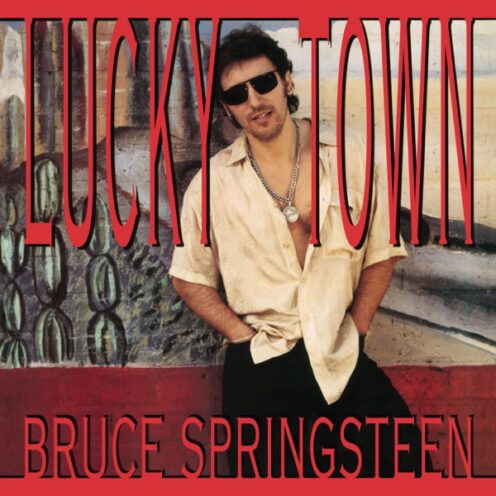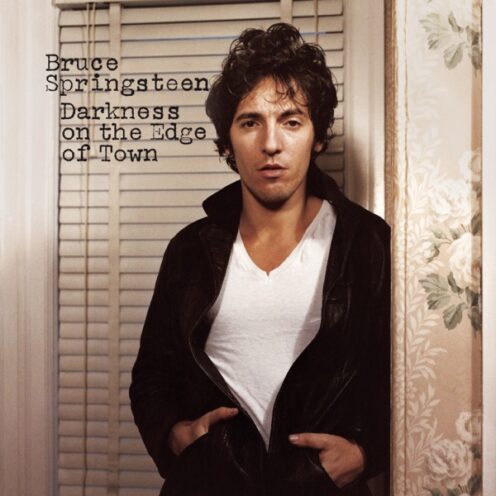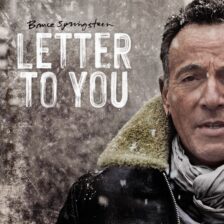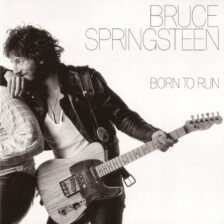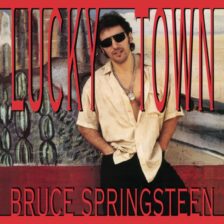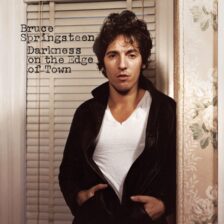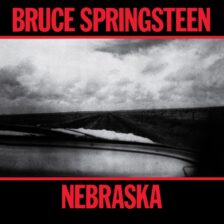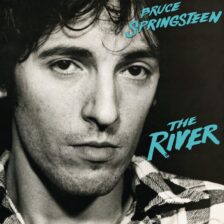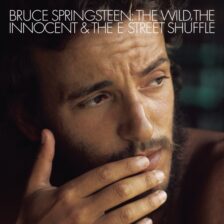At this point, you don’t get a Bruce Springsteen and the E Street Band project without questions about it being the last one. That’s actually been the case for years: when Springsteen and company closed out their 1999-2000 reunion tour at Madison Square Garden with a special extended version of “Blood Brothers,” it felt remarkably final. Nine years later, when The Boss concluded the Working on a Dream tour with a full-circle performance of his debut album, 1973’s Greetings from Asbury Park, NJ, a common topic of conversation in the Springsteen fan community was about whether we’d ever get another E Street tour. The band came back in 2012—sans late sideman Clarence Clemons—for a tour supporting Springsteen’s then-new LP Wrecking Ball, and came back again in 2016 to play 1980’s double-LP masterpiece The River in full night after night. At the end of each tour, the question resurfaced: was this the last dance? The ensuing years only gave credence to the idea that it might be, as Springsteen penned his memoir, spent more than year on Broadway, and circled back to old songs for last year’s solo Western Stars. Each of these projects was wrought with ruminations about fading youth, aging, and mortality. Bruce wrote and spoke extensively about Clemons, whose death in 2011 clearly shook him to the core. On Stars, he closed the album with “Moonlight Motel,” his most aching look back at the past, and at the little glories of youthful freedom and young love that can’t quite ever be replicated or recaptured.
Read More “Bruce Springsteen – Letter to You”Review: Bruce Springsteen – Darkness on the Edge of Town
Born to Run was the album that sparked my appreciation for Bruce Springsteen’s music, but Darkness on the Edge of Town was the album that made me a fan.
In 2015, when Born to Run turned 40, I wrote about the day I fell in love with it. A chance discussion about Springsteen at a family reunion sent me reaching for the Bruce albums on my iPod the next day, as my family traversed an epic snowstorm to drive back home. I had five Bruce records on my mp3 player, but I’d never really given full attention to any of them. They were all records from my parents’ CD collection, and at the time, I still stupidly believed (perhaps self-consciously) that older music couldn’t be my music in the same way as something released in my lifetime.
On that snowy drive home, I cycled through the Bruce albums on my iPod: the bombastic, optimistic dream of Born to Run; the scrappy underdog symphony of Greetings from Asbury Park; the deeply ‘80s-sounding Born in the U.S.A.; the resilient recovery rock of The Rising; and the sparse storytelling of Devils and Dust. I loved Born to Run immediately. I liked The Rising a lot, too. I had trouble getting over how dated Greetings and Born in the U.S.A. sounded to my ears at the time, but I liked the songs. And Devils was fine, but mostly didn’t move me.
Read More “Bruce Springsteen – Darkness on the Edge of Town”
Review: Bruce Springsteen – Born to Run
Today (August 25th, 2015), Bruce Springsteen’s Born to Run has officially been around for 40 years. It’s only had a huge influence on my life, though, for about seven. For a considerable amount of my personal musical growth, I was aware of “the Boss” and his work, but it didn’t really resonate with me on a personal level. Born to Run, along with Born in the USA, Greetings from Asbury Park, and The Rising, were among the first albums I ever put on my first iPod back in 2004, as I looted my parents’ CD collection looking for more tunes to stock my brand new 20 gigabyte device. But while I loved hearing the title track pop up on shuffle during runs, and while later songs like “My City in Ruins” always struck a chord with me, it took another four years for Born to Run to really become that album in my life.
Review: Bruce Springsteen – Human Touch/Lucky Town
The decision to release Human Touch and Lucky Town was probably the worst decision ever made in the Bruce Springsteen camp. Springsteen hadn’t been wrong about many things up to this point in his career, but whoever okay-ed the decision to release one really mediocre record and one really good record on the same day clearly didn’t know much about marketing and the forever-lasting stain one would leave on the other.
It is with the synthy, glossy, overproduced and underwhelming memory of Human Touch that Lucky Town will forever be dragged down. Many people (definitely including me, until as recently as about three weeks ago) dismissed the latter of the two records because of how misguided the former is. Even in 1991, when Springsteen’s management decided it was okay to release the two separate records on the same day (Springsteen was the first artist to ever do this), fans appreciated the singles on Human Touch and little else.
Read More “Bruce Springsteen – Human Touch/Lucky Town”Review: Bruce Springsteen – Darkness on the Edge of Town
Following up Born To Run is something that seems like a monumental task, but given the pressure Bruce Springsteen experienced in earlier parts of his career, it probably didn’t seem like such a tall mountain to climb. When Springsteen released Born To Run, Columbia Records basically treated it as the 25-year-old’s last chance to write something that could make them some money. Luckily, Springsteen churned out one of the most fantastic records of all time, launching himself into stardom as a household name and a worldwide presence. Need further evidence as to his importance other than his extensive world touring after the record? On Oct. 27, 1975, both Time and Newsweek put Springsteen on their respective covers, with Time calling him “Rock’s New Sensation.”
Read More “Bruce Springsteen – Darkness on the Edge of Town”Review: Bruce Springsteen – Nebraska
Bruce Springsteen’s 1982 release Nebraska is probably the release that Columbia Records was looking for when they signed a young and unproven Springsteen in the early 1970s. Although the record came about a decade later and it was Springsteen’s sixth studio album, Columbia probably isn’t too disappointed with how the whole Springsteen experiment played out.
The story behind Nebraska is not one that is known very well outside of the Springsteen faithful. Basically, The Boss recorded demos of an album that he meant to record with the E Street Band on a 4-track at home. When he went into the studio and the entire band recorded the album, Springsteen and his producers felt it didn’t translate right. The end result was the actual releasing of the demos, as recorded on a 4-track in Springsteen’s home. Let The Boss tell you about it himself.
I got a little Teac four-track cassette machine, and I said, I’m gonna record these songs, and if they sound good with just me doin’ ’em, then I’ll teach ’em to the band. I could sing and play the guitar, and then I had two tracks to do somethin’ else, like overdub a guitar or add a harmony. It was just gonna be a demo. Then I had a little Echoplex that I mixed through, and that was it. And that was the tape that became the record. It’s amazing that it got there, ’cause I was carryin’ that cassette around with me in my pocket without a case for a couple of week, just draggin’ it around. Finally, we realized, “Uh-oh, that’s the album.” Technically, it was difficult to get it on a disc. The stuff was recorded so strangely, the needle would read a lot of distortion and wouldn’t track in the wax. We almost had to release it as a cassette. [quote taken from a 1984 interview in Rolling Stone via the wonderful Wikipedia.]
I can’t even.
Read More “Bruce Springsteen – Nebraska”Review: Bruce Springsteen – The River
Unlike a couple of Bruce Springsteen’s previous records, The River can never be called a flawless effort. Arguments are made by some that Born To Run is a perfect work. With less fervor, people have called The Wild, The Innocent & The E Street Shuffle or Darkness On The Edge Of Town perfect. I’m not going to argue the degree of perfection found in any Springsteen album. But with The River, a 20-song, 83-minute behemoth of a double-disc record, there are certainly flaws. But with those flaws came yet another sign of Springsteen’s musical genius that was the most captivating part of rock and roll in the 1970s and 80s.
Springsteen originally recorded 10 songs for a record called The Ties That Bind, and that record was going to be released in late 1979. Instead of releasing that, Springsteen went back to the drawing board and wrote some darker material after penning a song called “The River.” The result was the double-disc that saw light of day in the fall of 1980. While the record didn’t have the compact and straightforward storytelling themes of Born To Runand Darkness, it does feature some of Springsteen’s most compelling songwriting.
Read More “Bruce Springsteen – The River”Review: Bruce Springsteen – Greetings From Asbury Park, N.J.
Greetings From Asbury Park, N.J. is one of the two records that Bruce Springsteen released before he was Bruce Springsteen. At this point in his career, a 23-year-old Springsteen was not yet The Boss, but a singer/songwriter who Columbia Records signed with the hope that he would blossom into the next Bob Dylan. To say the least, Columbia was not pleased with Springsteen’s January 1973 debut full-length, as Greetings had no huge singles and proved to be much more rock’n’roll than Columbia had bargained for.
The record was received well by critics at the time of release, but Springsteen didn’t become America’s favorite rock star right away. Columbia released “Blinded By the Light” and “Spirit In the Night” as singles, but neither had any impact whatsoever on any charts. Most people only know “Blinded By the Light” because of the remake by Manfred Mann’s Earth Band, and “Spirit By the Night” didn’t have the instant accessibility needed to become a regular number played on the radio. Considering the conditions under which the record was written, with Springsteen recording with producer/manager Mike Appel in one of the cheapest available studios in New York, it’s not much of a surprise that it only sold around 25,000 copies in its first year.
Read More “Bruce Springsteen – Greetings From Asbury Park, N.J.”Review: Bruce Springsteen – The Wild, The Innocent & The E Street Shuffle
With Columbia Records disappointed at the result of Greetings From Asbury Park, N.J., there was only one thing for Bruce Springsteen to do – give it another chance. So what did he do? He wrote, recorded and released an entire record in less than a year. Even lessthan less than a year, if that makes sense. Greetings was released on Jan. 5, 1973. The Wild, The Innocent& The E Street Shuffle came out barely seven months later – on Sep. 11, 1973.
Perhaps more impressive than the short turnaround is the quantum leap between the two records. Shuffle is more rock’n’roll while at the same time being more funky, the lyricism is improved to an exponential power, and it is the recorded debut of Springsteen’s E Street Band. An interesting point is that when Springsteen started off, he signed a contract with Columbia Records for Bruce Springsteen – no E Street Band existed for quite a while. Even on Shuffle, only three members of the E Street Band would continue on to work with The Boss for his entire career.
Read More “Bruce Springsteen – The Wild, The Innocent & The E Street Shuffle”Review: Bruce Springsteen – Live At Hammersmith Odeon, 1975
Next in the order of Bruce Springsteen’s studio records should be Darkness On The Edge Of Town. Rest assured, I’m not skipping Darkness, but I am skipping three other studio albums. Instead of doing reviews for The Ghost Of Tom Joad, Human Touch and Lucky Town, I am instead reviewing three live performances – Hammersmith Odeon, London ’75 (from the Born To Run 30th anniversary boxed set), Live In New York City ‘01 and London Calling. Since the Hammersmith Odeon concert happened in between Born to Run and Darkness, I’m just filing the review where it belongs in chronological order. The Darkness review will be up in next week’s batch.
If you read the last review in this series, about Born To Run, you probably noticed that I liked that record quite a bit. I wrote that I think it’s the best record of all time, so it should come as no surprise that I think Bruce Springsteen’s best touring days came after the release of that album. Many people subscribe to the opinion that Springsteen and The E Street Band were even more impressive after the release of Darkness On The Edge of Town, but I don’t think anything can compare to Springsteen’s performance at the Hammersmith Odeon in London in 1975.
Read More “Bruce Springsteen – Live At Hammersmith Odeon, 1975”Review: Bruce Springsteen – Born To Run
Born To Run is the best album ever written. It contains within its eight tracks the two best rock and roll songs ever written and three other songs that are damn close. The album cover is the best album art ever put on a record. This review does not reflect my bias of Bruce Springsteen and The E Street Band, but rather my honest opinion about what I (and many others) consider to be the record that saved rock and roll music.
When a 25-year-old Springsteen released Born To Run in 1975, he was almost ready to hang up his hat on music. Columbia Records did not approve of the cult following that Greetings From Asbury Park, N.J. and The Wild, The Innocent & The E Street Shufflecreated; they signed Springsteen with the very specific idea that he was going to sell as many records as Bob Dylan. They wanted his face on billboards on the highway, and they wanted his name on top of the Billboard singles charts every week. Springsteen has said that the only thing that made him write Born To Run was that he never wanted to have a 9-to-5 job in his life. In Dave Marsh’s biography of Springsteen, Marsh writes that Springsteen was finally going to call it quits if Born To Run didn’t succeed. Well, the record didn’t just succeed – it went down as one of the most important records ever released, and Springsteen filled an empty void as America’s beloved and adored rock and roll superstar.
Read More “Bruce Springsteen – Born To Run”


